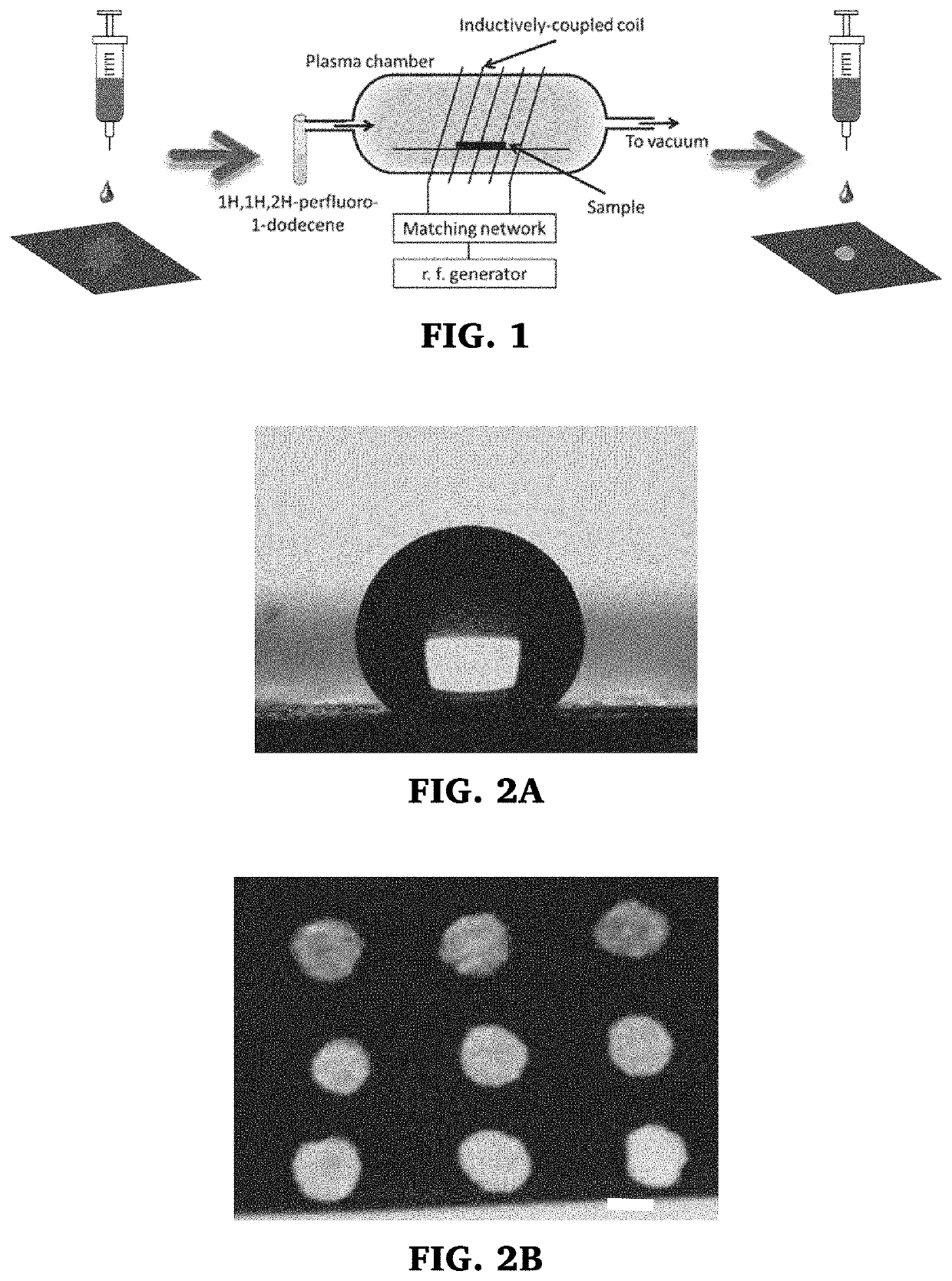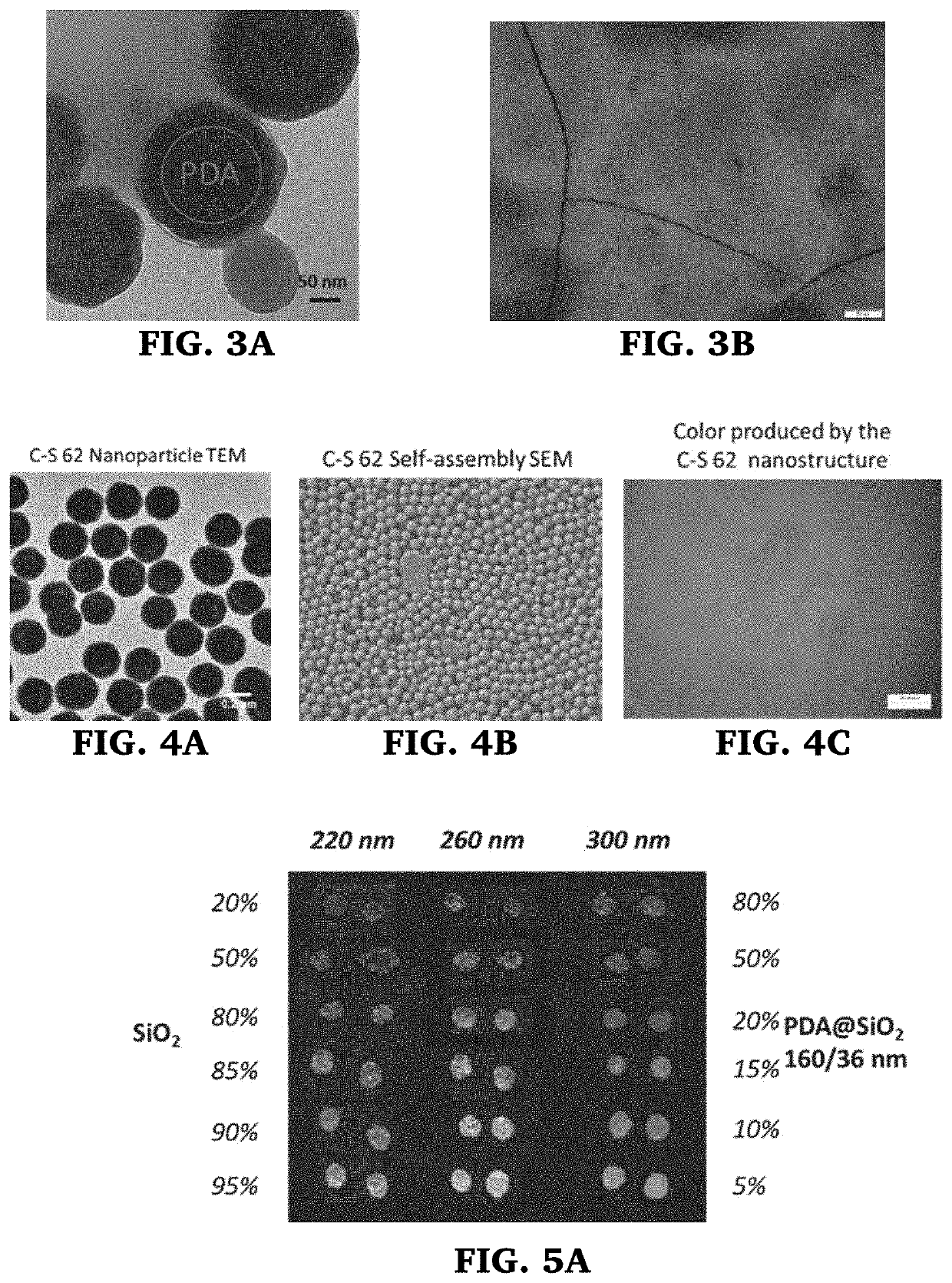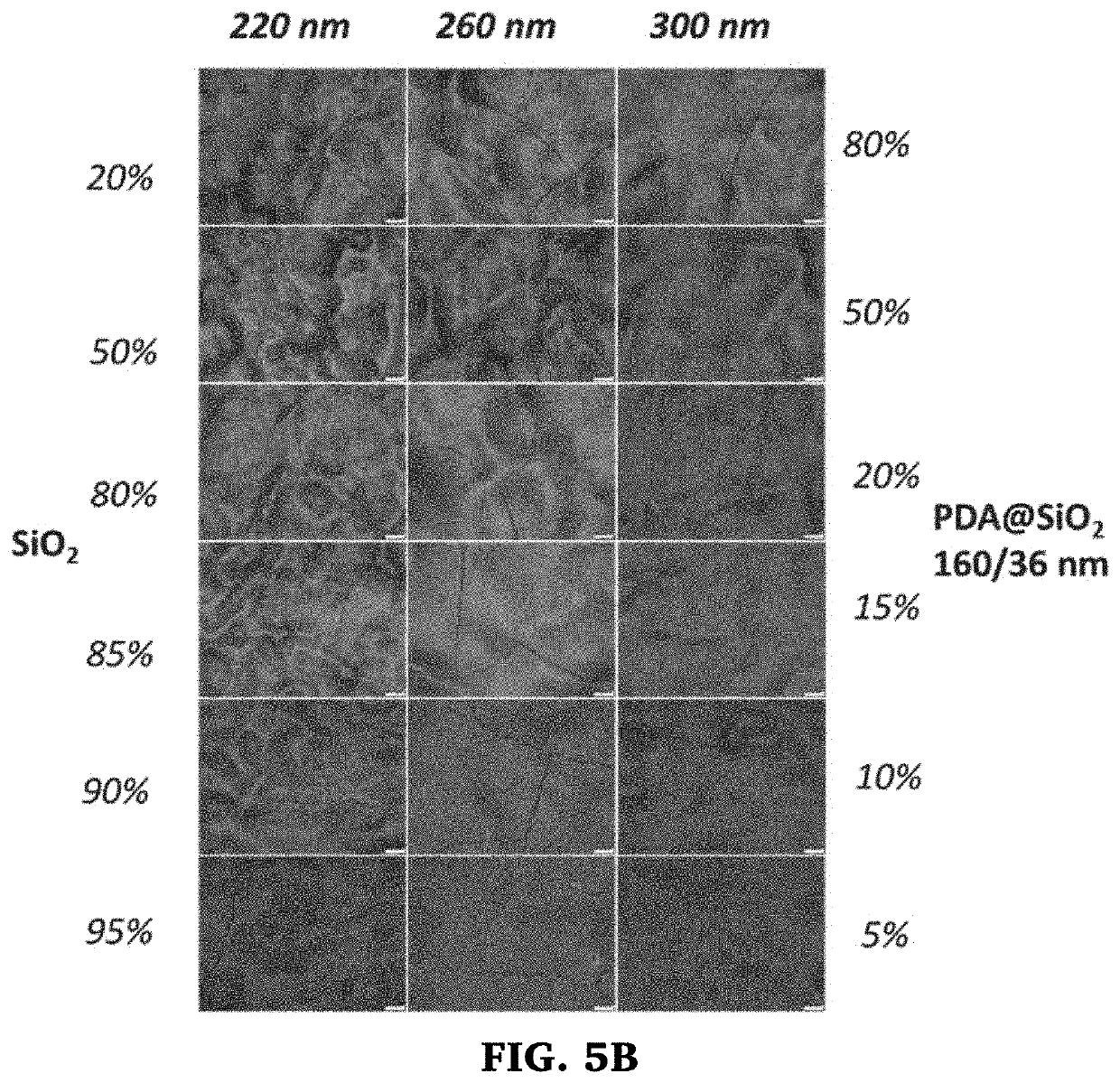Production of a wide gamut of structural colors using binary mixtures of particles with a potential application in ink jet printing
a technology of structural colors and mixtures, applied in the field of structural colors, can solve the problems of reducing the saturation and quality of colors, and the synthesis of different-sized particles to generate color diversity is tedious, so as to reduce or prevent the effect of coffee ring effect, reduce or prevent absorption
- Summary
- Abstract
- Description
- Claims
- Application Information
AI Technical Summary
Benefits of technology
Problems solved by technology
Method used
Image
Examples
example 1
Preparation and Optical Properties of Printed Structural Colored Dots on Perfluoro Treated Substrates
[0089]FIG. 1 illustrates the cold-plasma approach used to modify the surface of the substrate to enable assembly of nanoparticles from a colloidal suspension by drop deposition. In these experiments, paper substrates with and without a fluorinated monomer coating applied by plasma-enhanced vapor deposition of 1H,1H,2H-perfluoro-1-dodecene (perfluoro) were evaluated by drop deposition of an aqueous colloidal suspension. FIGS. 11A-Bare SEM images of the resulting morphology on the untreated (FIG. 11A) and the treated (FIG. 11B) substrate surfaces. As can be seen in FIG. 11A, when microliter (μL) droplets of colloidal suspension were released onto an untreated paper, the dispersion medium (i.e. water) was readily absorbed by the porosity of the paper due to capillary action, thereby impeding the particles from forming a colloidal nanostructure. The 1H,1H,2H-perfluoro-1-dodecene (perfluo...
example 2
Evaluation of Nanostructural Assemblies Formed from SiO2 / PDA Particles at Different Particle Sizes and PDA Loadings
[0090]The top row in FIG. 12 shows the scanning electron microscopy (SEM) images of the assemblies resulting from the packing of SiO2 particles of sizes 220, 260 and 300 nm diameter (from left to right), without PDA. The two-dimensional (2D) fast Fourier transform (FFT) of these micrographs indicates semi-ordering with six-fold symmetry (hexagonal packing) (inset). These nanostructural assemblies (FIG. 11B) present a macroscopic effect when they interact with white light via scattering phenomenon to produce structural colors.
[0091]The middle and bottom panel of FIG. 12 show the scanning electron microscopy (SEM) images of the assemblies resulting from the packing of SiO2 particles of sizes 220, 260 and 300 nm diameter (from left to right) with 2% (middle row) and 5% (bottom row) by weight (wt %) of PDA present. It can be observed from these images and the SEM images wit...
example 3
The Effect of Particle Size on Structural Colors Produced by SiO2 Nanoparticles in the Presence of PDA Nanoparticles
[0092]As set forth above, SiO2 nanoparticles have been widely applied in the generation of structural colors over the years, giving whitish colors due to the high reflectance of incoherent background scattering. As described above in Examples 1 and 2, the particle sizes employed in the fabrication of colloidal assemblies play a key role in determining the hue produced by light scattering. Previous reports have shown that colloidal arrays exhibit a red-shift in the reflection peak with increasing particle diameter. The same effect was observed with the SiO2 / PDA nanoparticles as shown in FIGS. 8A-B, 13A-C and 14A-C. In these experiments, structural colors were produced by drop deposition and evaporation on perfluoro treated substrates using colloidal suspensions with SiO2 nanoparticles with diameters of 220 nm, 260 nm, and 300 nm at PDA loadings of from 0 wt % 5 wt % and...
PUM
 Login to View More
Login to View More Abstract
Description
Claims
Application Information
 Login to View More
Login to View More - R&D
- Intellectual Property
- Life Sciences
- Materials
- Tech Scout
- Unparalleled Data Quality
- Higher Quality Content
- 60% Fewer Hallucinations
Browse by: Latest US Patents, China's latest patents, Technical Efficacy Thesaurus, Application Domain, Technology Topic, Popular Technical Reports.
© 2025 PatSnap. All rights reserved.Legal|Privacy policy|Modern Slavery Act Transparency Statement|Sitemap|About US| Contact US: help@patsnap.com



